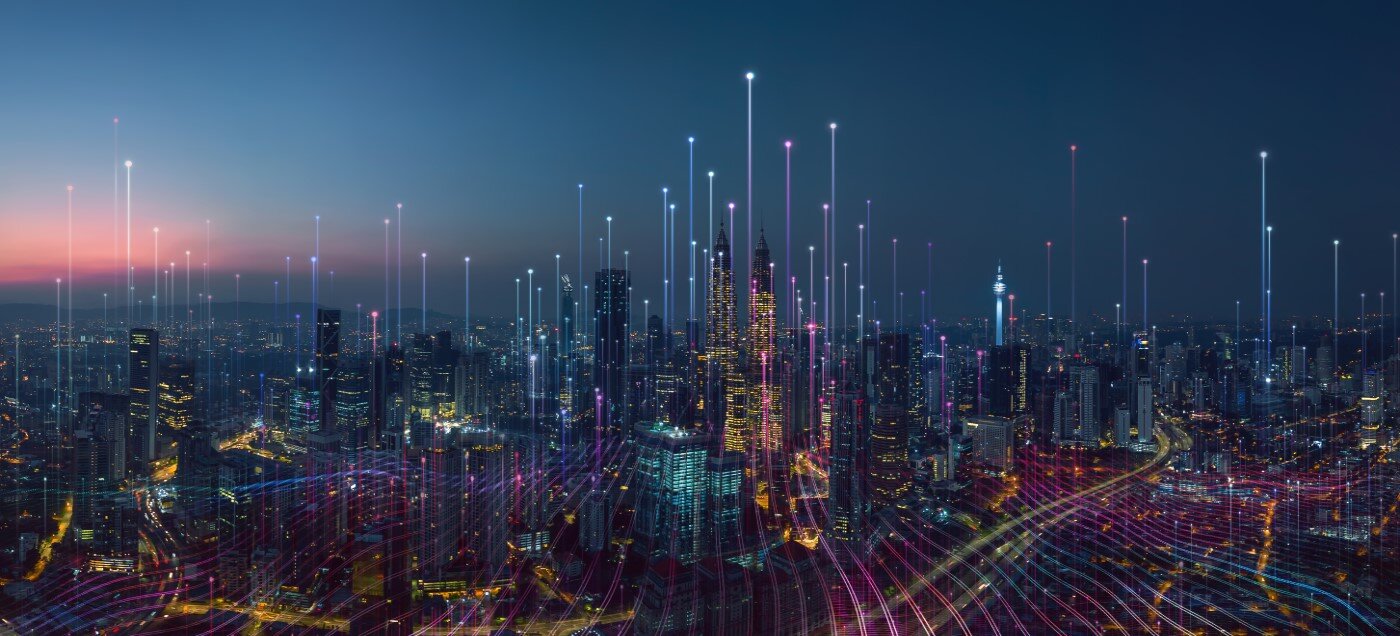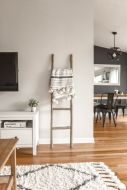Transforming Your Interior Design Concepts into Reality with 3D Rendering Services
Interior designing is an art form wherein the goal is to turn the blank canvas of a space into a room where creativity, functionality, and aesthetic appeal prevail. As technology continues to advance at a breakneck pace, the world of interior design has witnessed a transformative shift, with 3D rendering technology emerging at the forefront as a game-changer. With 3D rendering and visualization, gone are the days when interior designers had to rely solely on blueprints and imagination. Nowadays, with the use of 3D visualization and rendering services, designers and clients can see eye to eye and embark on a virtual journey to witness their interior design concepts come to life, even before a single nail is hammered or a paintbrush is lifted. In this article, we will tackle the profound impact of 3D rendering technology on the interior design process and explore how this cutting-edge technology can turn ideas into tangible, realistic visualizations so as to facilitate a seamless transition from conceptualization to reality. The Evolution of Interior Design Visualization Back in the days when the medium was limited to paper and prints, interior designers conveyed their design concepts through sketches, mood boards, and 2D-floor plans. While these methods provided a foundation for design concepts, these often left a lot of room for imagination and, subsequently, misinterpretation. Moreover, these 2D designs lacked the immersive quality needed to understand the spatial dynamics of a design. This is why the introduction of 3D rendering technology marked such a revolutionary shift, as it offers a dynamic and realistic representation of interior spaces. This evolution has not only enhanced the design process but has also empowered both designers and clients to actively participate in shaping the outcome of the construction. The Journey from Concept to Three-Dimensional Visualizations Navigate the journey from conceptualization to the creation of a compelling 3D rendering is a multi-step process that involves the following steps: 1. Conceptualization Designers begin the whole process by conceptualizing ideas based on client preferences, functional requirements, and aesthetic goals. With 3D rendering technology, these concepts can be translated into virtual models wherein designers can experiment with different layouts, styles, and color schemes. 2. Detailed Visualization Once the basic concept and layout are established, 3D rendering technology enables designers to create detailed visualizations. These include realistic representations of furniture, lighting, textures, and other design elements. At this point in time, clients can now see how each design choice contributes to the overall ambiance and aesthetic of the space. 3. Material Selection Choosing materials is a crucial aspect of interior design. 3D rendering technology allows designers to showcase different material options accurately. Clients can visualize how various materials, from flooring to countertops, contribute to the overall look and feel of the space. This, then, aids in informed decision-making. 4. Spatial Planning Spatial planning is a complex task that involves optimizing the layout for functionality and aesthetics. 3D rendering technology provides a dynamic platform for experimenting with spatial arrangements. With this feature, designers can easily adjust furniture placement, room divisions, and architectural elements to find the most optimal and visually appealing configuration. 5. Client Collaboration The iterative nature of 3D rendering technology facilitates seamless collaboration between designers and clients. Realistic 3D renderings allow clients to give their feedback on the virtual model and express their preferences while making design decisions in real time. That said, this collaborative approach ensures that the final design aligns closely with the client’s vision. The Advantages of Using 3D Rendering Services in Interior Designing 3D rendering—with all its benefits—has become an invaluable tool in the field of interior design owing to the numerous advantages it offers, such as follows: 1. Realistic Preview of the Final Design The hallmark of 3D rendering lies in its ability to deliver unparalleled visual realism. The ability to see a realistic preview of the final design is a game-changer in interior design. With this feature, clients no longer need to rely solely on imagination to visualize how the project will look at the end of the construction; instead, they can virtually step into their future space and experience how it will look and feel once it is done. This realistic preview instills confidence in design decisions and mitigates uncertainties and disappointments. 2. Interactive Exploration In the past, clients have had to make do with static images and rely on the designer’s ability to describe their design concepts. But now, the 3D renderings provide an interactive experience that allows clients to explore eve

Interior designing is an art form wherein the goal is to turn the blank canvas of a space into a room where creativity, functionality, and aesthetic appeal prevail. As technology continues to advance at a breakneck pace, the world of interior design has witnessed a transformative shift, with 3D rendering technology emerging at the forefront as a game-changer. With 3D rendering and visualization, gone are the days when interior designers had to rely solely on blueprints and imagination. Nowadays, with the use of 3D visualization and rendering services, designers and clients can see eye to eye and embark on a virtual journey to witness their interior design concepts come to life, even before a single nail is hammered or a paintbrush is lifted. In this article, we will tackle the profound impact of 3D rendering technology on the interior design process and explore how this cutting-edge technology can turn ideas into tangible, realistic visualizations so as to facilitate a seamless transition from conceptualization to reality. The Evolution of Interior Design Visualization Back in the days when the medium was limited to paper and prints, interior designers conveyed their design concepts through sketches, mood boards, and 2D-floor plans. While these methods provided a foundation for design concepts, these often left a lot of room for imagination and, subsequently, misinterpretation. Moreover, these 2D designs lacked the immersive quality needed to understand the spatial dynamics of a design. This is why the introduction of 3D rendering technology marked such a revolutionary shift, as it offers a dynamic and realistic representation of interior spaces. This evolution has not only enhanced the design process but has also empowered both designers and clients to actively participate in shaping the outcome of the construction. The Journey from Concept to Three-Dimensional Visualizations Navigate the journey from conceptualization to the creation of a compelling 3D rendering is a multi-step process that involves the following steps: 1. Conceptualization Designers begin the whole process by conceptualizing ideas based on client preferences, functional requirements, and aesthetic goals. With 3D rendering technology, these concepts can be translated into virtual models wherein designers can experiment with different layouts, styles, and color schemes. 2. Detailed Visualization Once the basic concept and layout are established, 3D rendering technology enables designers to create detailed visualizations. These include realistic representations of furniture, lighting, textures, and other design elements. At this point in time, clients can now see how each design choice contributes to the overall ambiance and aesthetic of the space. 3. Material Selection Choosing materials is a crucial aspect of interior design. 3D rendering technology allows designers to showcase different material options accurately. Clients can visualize how various materials, from flooring to countertops, contribute to the overall look and feel of the space. This, then, aids in informed decision-making. 4. Spatial Planning Spatial planning is a complex task that involves optimizing the layout for functionality and aesthetics. 3D rendering technology provides a dynamic platform for experimenting with spatial arrangements. With this feature, designers can easily adjust furniture placement, room divisions, and architectural elements to find the most optimal and visually appealing configuration. 5. Client Collaboration The iterative nature of 3D rendering technology facilitates seamless collaboration between designers and clients. Realistic 3D renderings allow clients to give their feedback on the virtual model and express their preferences while making design decisions in real time. That said, this collaborative approach ensures that the final design aligns closely with the client’s vision. The Advantages of Using 3D Rendering Services in Interior Designing 3D rendering—with all its benefits—has become an invaluable tool in the field of interior design owing to the numerous advantages it offers, such as follows: 1. Realistic Preview of the Final Design The hallmark of 3D rendering lies in its ability to deliver unparalleled visual realism. The ability to see a realistic preview of the final design is a game-changer in interior design. With this feature, clients no longer need to rely solely on imagination to visualize how the project will look at the end of the construction; instead, they can virtually step into their future space and experience how it will look and feel once it is done. This realistic preview instills confidence in design decisions and mitigates uncertainties and disappointments. 2. Interactive Exploration In the past, clients have had to make do with static images and rely on the designer’s ability to describe their design concepts. But now, the 3D renderings provide an interactive experience that allows clients to explore every nook and cranny of the virtual space even before the construction takes place. The ability to navigate through rooms, scrutinize details, and view the design from different angles empowers the clients to proactively engage in the design process by changing what they don’t like right then and there. Doing so fosters a deeper understanding and connection with the proposed concept. 3. Time and Cost Efficiency 3D rendering technology contributes to time and cost efficiency throughout the design process because changes and revisions can be made swiftly in the virtual environment. This minimizes the need for extensive modifications during the physical implementation and construction phase. This efficiency translates to a more streamlined design timeline and reduced costs associated with rework. 4. Efficient Communication Back in the day, verbal descriptions and 2D sketches often led to misunderstandings between designers and clients. But with 3D renderings in the designer’s arsenal, they can use it as a universal language that eliminates ambiguity and facilitates clear communication between the designer and client. This way, designers can present their ideas visually, leaving no room for imagination to ensure that clients grasp the nuances of the design. On the other hand, clients will see right then and there whether they are satisfied with the design or not. This efficient mode of communication minimizes the risk of misinterpretation and enables a more collaborative and productive design dialogue. 5. Client Satisfaction The immersive and collaborative nature of 3D rendering technology ensures client satisfaction. When clients can see the […] The post Transforming Your Interior Design Concepts into Reality with 3D Rendering Services appeared first on Amazing Interior Design.
What's Your Reaction?





















